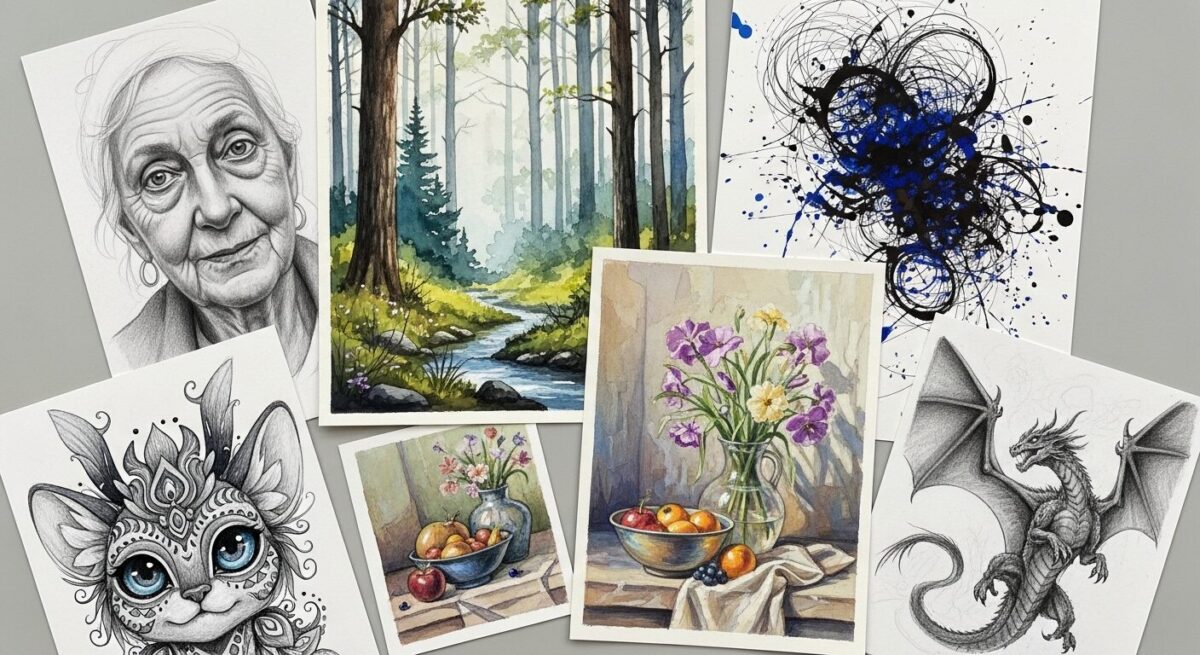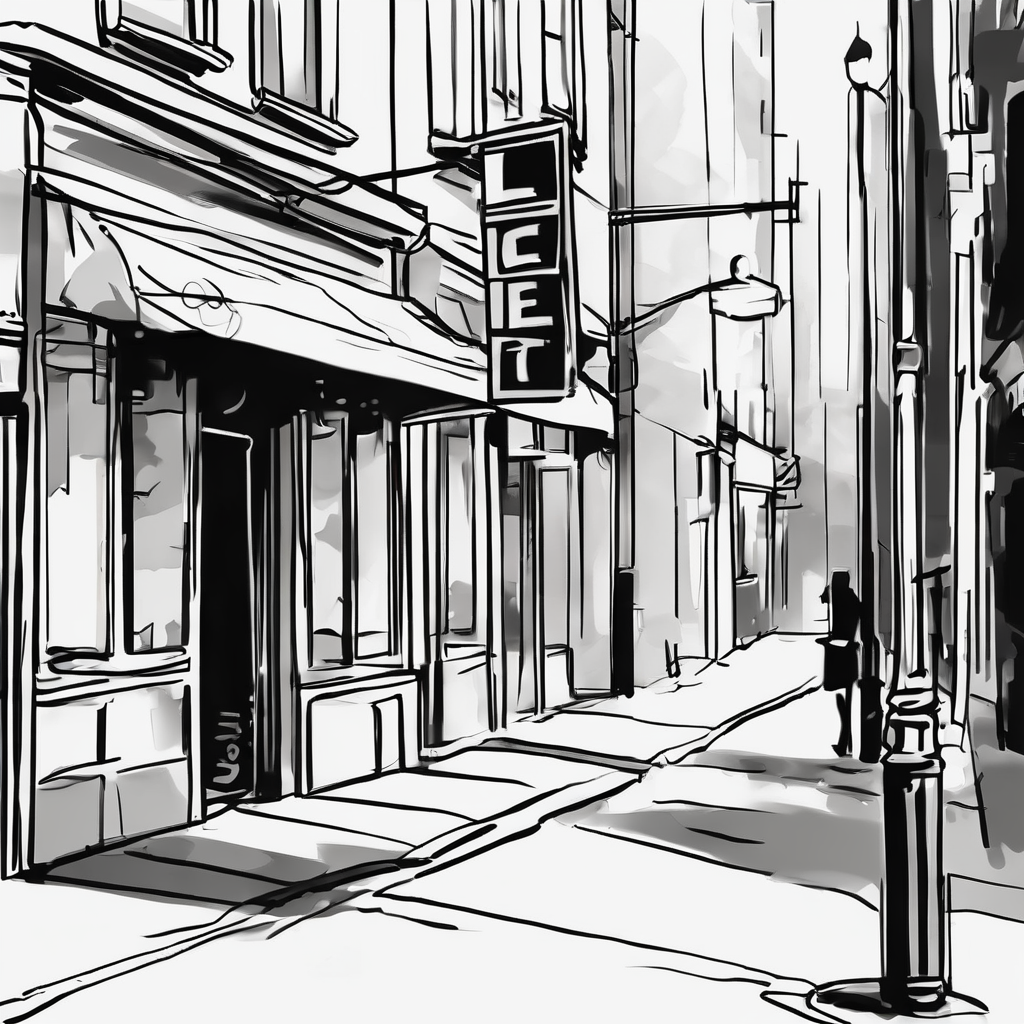Staring at a blank piece of paper can feel like facing a mountain you can’t climb. Every artist knows this frustrating feeling – when creativity seems to have vanished and you’re searching desperately for ideas for drawing prompts that will spark your imagination again. Whether you’re a beginner picking up a pencil for the first time or an experienced artist hitting a creative wall, having a toolkit of inspiring prompts can transform your artistic journey and reignite your passion for creating.
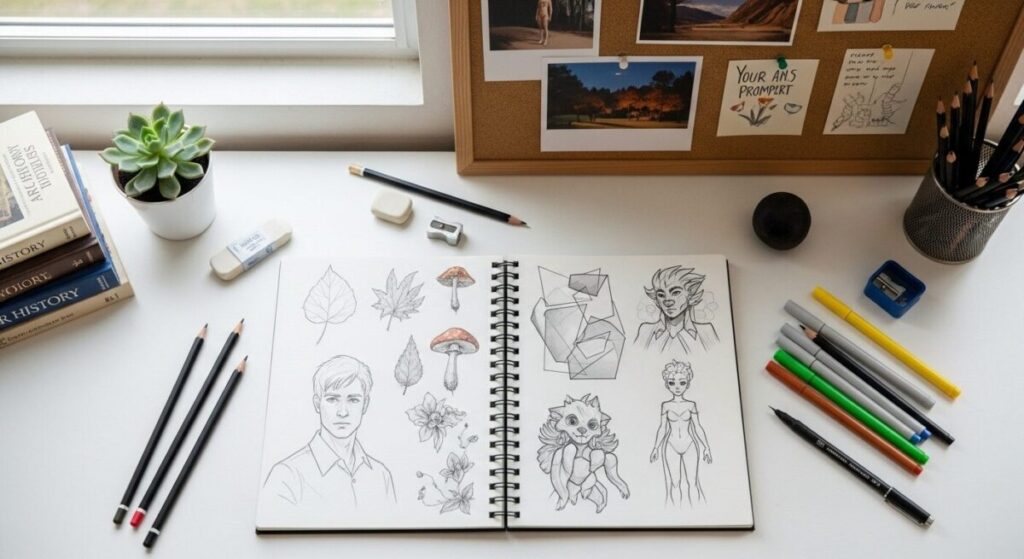
Key Points Summary
- Drawing prompts help overcome creative blocks and inspire new artistic directions
- 30+ unique prompt categories provide endless inspiration for artists at any skill level
- Simple techniques can transform everyday objects into compelling art subjects
- Building a personal prompt system ensures you never run out of creative ideas
- Regular practice with varied prompts accelerates artistic growth and skill development
Understanding Creative Blocks and Why They Happen
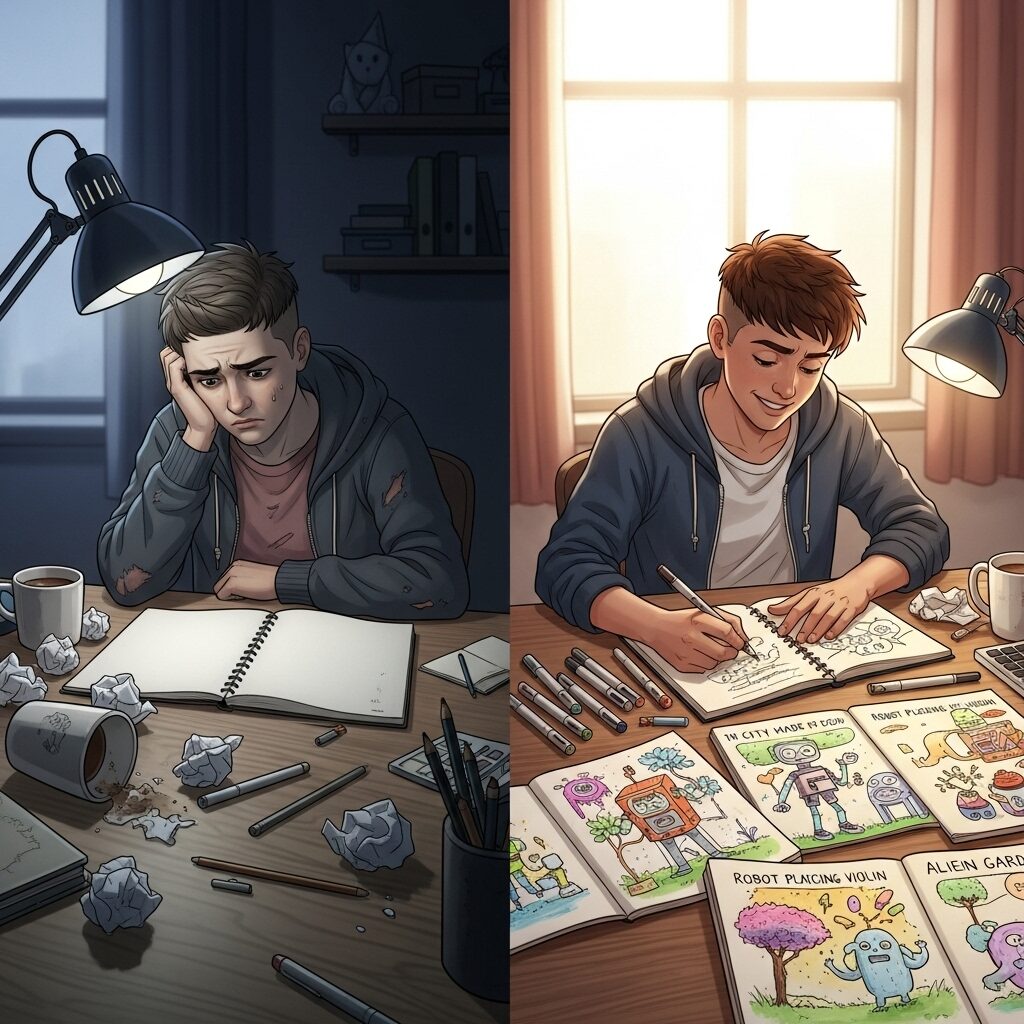
Creative blocks are like unexpected storms – they arrive without warning and can leave even the most talented artists feeling stuck. These mental roadblocks happen to everyone, from Pablo Picasso to your favorite Instagram artist. The good news? They’re completely normal and totally beatable.
When your brain feels empty of ideas, it’s often because you’re overthinking or putting too much pressure on yourself to create something “perfect.” Your creative mind works best when it’s playful and relaxed, not when it’s stressed about producing a masterpiece. This is where finding art inspiration becomes crucial for maintaining your artistic momentum.
Drawing prompts act like creative jump-starts for your imagination. They give your brain a specific direction to focus on, removing the overwhelming feeling of infinite possibilities. Think of them as friendly suggestions that whisper, “Hey, why not try drawing this?” instead of leaving you staring at that intimidating blank page.
The magic happens because prompts bypass your inner critic – that voice that says “I don’t know what to draw” or “Everything I make looks terrible.” When you have a specific prompt, your brain switches from worry mode to problem-solving mode, naturally flowing into the creative process.
Creative Drawing Prompts to Spark Your Imagination
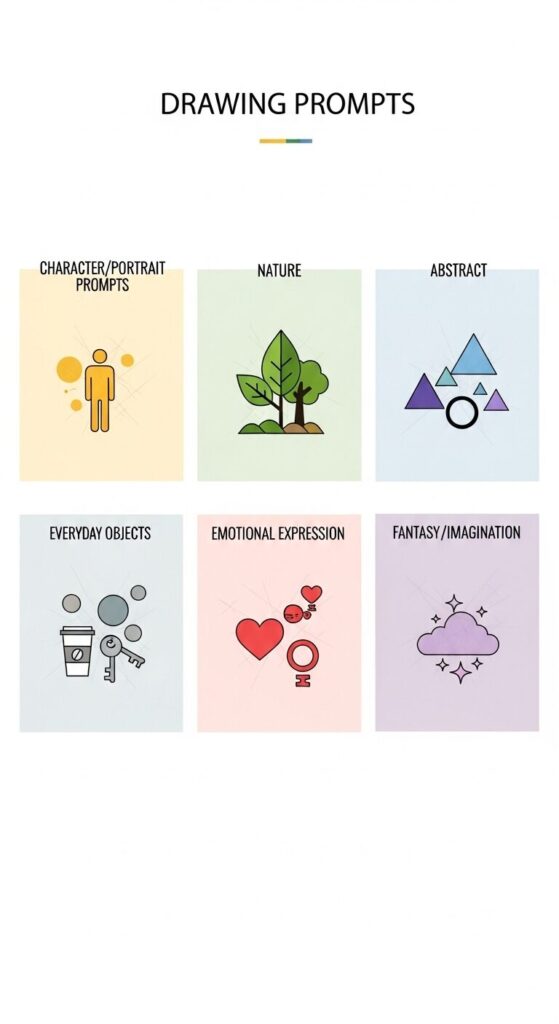
Character and Portrait Inspiration
Characters bring life to your drawings and help you practice essential skills like facial expressions and body language. Start with these engaging character prompts:
- Draw yourself as a superhero with unique powers
- Create a person made entirely of your favorite food
- Sketch someone who lives in the clouds
- Design a character who can only speak in colors
- Illustrate a person whose job is to paint rainbows
Portrait work doesn’t have to be serious or realistic. Try drawing emotions as facial expressions, or imagine what different weather patterns would look like as people. These exercises help you understand human features while keeping the process fun and experimental.
Nature and Landscape Adventures
The natural world offers endless inspiration for artists. These nature-focused prompts encourage you to see the outdoors with fresh eyes:
- Draw a tree that grows upside-down
- Create a mountain made of books
- Sketch what rain looks like from a raindrop’s perspective
- Illustrate a garden where flowers are tiny houses
- Design a forest where the leaves are different musical instruments
Working with nature themes helps you practice textures, patterns, and organic shapes. Even if you’re drawing indoors, these prompts connect you with the natural world and challenge you to think beyond literal representation.
Abstract and Experimental Concepts
Abstract drawing frees you from the pressure of making things look “real.” These prompts encourage pure creativity:
- Draw what happiness sounds like
- Create a visual representation of your favorite song
- Sketch what dreams taste like
- Illustrate the feeling of floating
- Design what time looks like if it had a shape
Abstract prompts are perfect for exploring expressive art techniques and discovering your unique artistic voice. Don’t worry about whether others “understand” your drawing – focus on expressing ideas and emotions through lines, shapes, and movement.
Everyday Object Transformations
The ordinary objects around you can become extraordinary with the right creative twist:
| Object | Creative Transformation |
|---|---|
| Coffee mug | A tiny house for miniature people |
| Shoes | Boats sailing on puddles |
| Books | Sandwich ingredients |
| Phone | Magic mirror showing other worlds |
| Keys | Tiny swords for fairy warriors |
This approach trains your eye to see creative possibilities everywhere. As Pablo Picasso once said,
“Inspiration exists, but it has to find you working.”
By practicing with everyday items, you’re preparing your mind to catch inspiration whenever it appears.
Emotional Expression Through Art
Drawing your feelings helps process emotions while developing your artistic skills:
- Sketch what frustration looks like as a weather pattern
- Draw your excitement as a type of firework
- Illustrate calm as a landscape
- Create worry as a tangled line drawing
- Express joy through dancing shapes
These emotional prompts connect your inner world with your artistic expression, creating deeply personal and meaningful artwork that resonates with viewers.
🎨 Drawing Ideas Generator
Unleash your creativity with unlimited inspirational drawing ideas
Choose Your Drawing Category
Difficulty Level
Time Challenge
Your Drawing Ideas
Click the button above to generate your first drawing idea!
Drawing Tips & Techniques
Start with Basic Shapes
Break down complex subjects into simple geometric shapes like circles, squares, and triangles before adding details.
Practice Daily Sketching
Dedicate 15-30 minutes daily to sketching. Consistency is more valuable than long, infrequent sessions.
Study Light and Shadow
Understanding how light interacts with objects will dramatically improve the realism of your drawings.
Use Reference Images
Don’t rely solely on imagination. Use photos, real objects, or live models as references for accuracy.
Experiment with Different Materials
Try various pencils, pens, charcoal, and digital tools to find what works best for different styles.
Focus on Proportions
Use measuring techniques and guidelines to ensure accurate proportions in your drawings.
Overcoming Specific Creative Challenges
Defeating Blank Page Syndrome
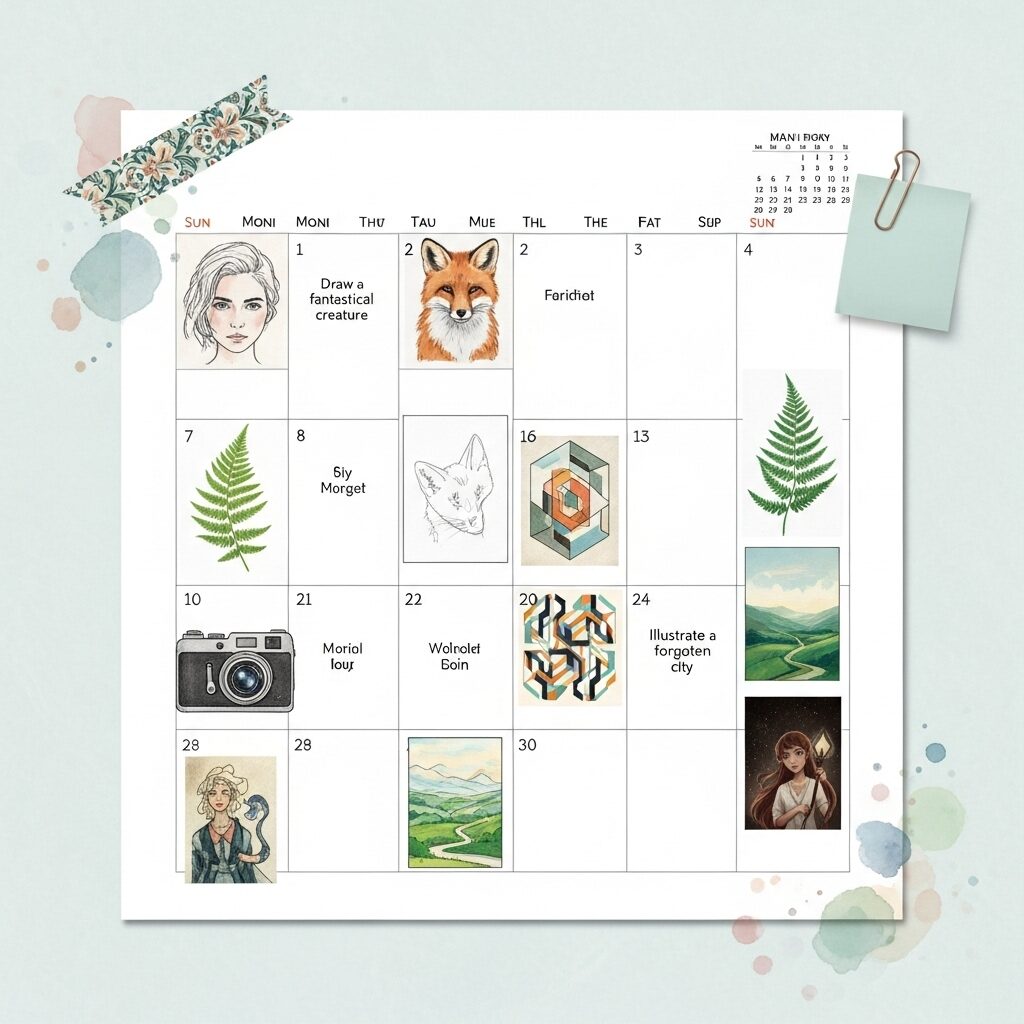
That empty page isn’t your enemy – it’s a playground waiting for your creativity. When blank page fear strikes, start with the tiniest mark possible. Draw a single dot, then ask yourself, “What could this dot become?” Sometimes the smallest beginning leads to your biggest breakthrough.
Try the “ugly sketch” method: deliberately make something imperfect first. Give yourself permission to create something messy, knowing you can always refine it later. This removes pressure and gets your creative energy flowing.
Breaking Through Perfectionism
Perfectionism is creativity’s biggest enemy. When you’re worried about making mistakes, you stop taking creative risks. Creative sketchbook ideas can help you embrace experimentation over perfection.
Set a timer for just five minutes and commit to filling a page with drawings, regardless of quality. This time pressure forces you to focus on creating rather than critiquing. You’ll be amazed at how much you can accomplish when perfectionism isn’t holding you back.
Moving Past Skill Plateaus
When your drawings start looking the same, it’s time to challenge yourself with unfamiliar subjects or techniques. Use prompts that push you outside your comfort zone – if you always draw people, try landscapes; if you love realistic art, experiment with abstract concepts.
The goal isn’t immediate mastery but continued growth. Each new challenge teaches your brain different ways to see and interpret the world around you.
Building Your Personal Prompt System
Creating a customized prompt collection ensures you always have inspiration at your fingertips. Start by writing down subjects that genuinely interest you – maybe it’s ocean creatures, vintage cars, or mythical beings. Your personal interests make the best prompt foundations because you’re naturally motivated to explore them.
Keep a small notebook or phone app dedicated to collecting interesting ideas you encounter throughout the day. Overheard conversations, unusual cloud formations, interesting textures, or random thoughts can all become drawing prompts. The key is capturing these moments before they slip away.
Consider joining online art communities or challenges like Inktober, where artists share prompts and support each other’s creative journeys. These communities provide accountability, inspiration, and the motivation to keep drawing even when you don’t feel like it.
You can also create themed prompt weeks – spend seven days drawing different types of houses, various emotions, or reimagined fairy tale characters. This focused approach helps you dive deep into specific subjects while maintaining variety in your practice.
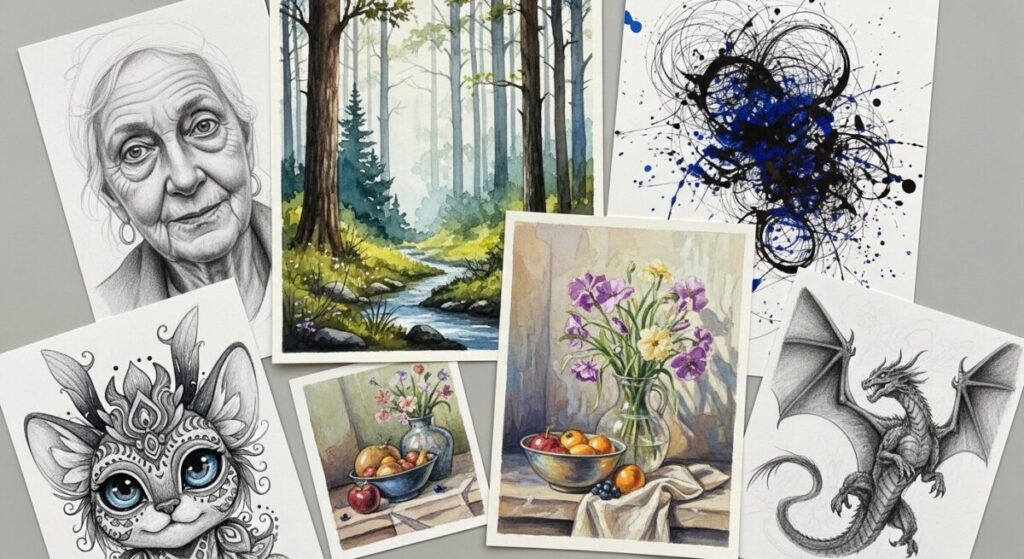
Building Momentum with Daily Practice
Consistency beats intensity when developing your artistic drawing skills. Drawing for fifteen minutes every day creates more progress than drawing for three hours once a week. Use prompts to establish this daily habit – they eliminate the “what should I draw?” question that often prevents artists from starting.
Consider following essential artist tips to structure your practice sessions effectively. Remember that every drawing, even the ones you don’t love, teaches you something valuable about line, form, composition, or color.
Conclusion: Your Creative Journey Continues
Finding the right ideas for drawing prompts transforms the intimidating blank page into an exciting opportunity for discovery. Remember that creativity isn’t about producing perfect art – it’s about expressing yourself, exploring new possibilities, and growing as an artist. Every prompt you try, every sketch you complete, and every creative challenge you embrace moves you forward on your artistic journey.
The prompts and strategies in this guide provide you with a foundation, but your unique perspective and personal interests will shape them into something entirely your own. Whether you’re working through creative blocks, building new skills, or simply enjoying the meditative process of drawing, these prompts will serve as reliable companions on your creative adventure.
Start today with just one prompt that speaks to you. Your artistic voice is waiting to be discovered, one drawing at a time.
Frequently Asked Questions
What should I draw when I have no ideas? Start with simple observation drawings of objects around you, then add creative twists. Draw your coffee cup as a castle, or your houseplant as a character with personality.
How do I overcome creative block as an artist? Use structured prompts to bypass decision paralysis, set time limits to reduce pressure, and remember that overcoming creative blocks often requires simply starting with any mark on paper.
What are good daily drawing prompts for beginners? Focus on basic shapes transformed into characters, simple emotional expressions, or everyday objects with imaginative purposes. Start with 5-minute sketches to build confidence.
How can I make my drawings more creative? Combine unrelated concepts (like “musical vegetables” or “architectural animals”), experiment with unusual perspectives, and challenge yourself to avoid obvious interpretations of your subjects.
What drawing exercises improve creativity? Try blind contour drawing, non-dominant hand sketches, and time-limited challenges. These exercises break habitual patterns and encourage fresh approaches to familiar subjects.

